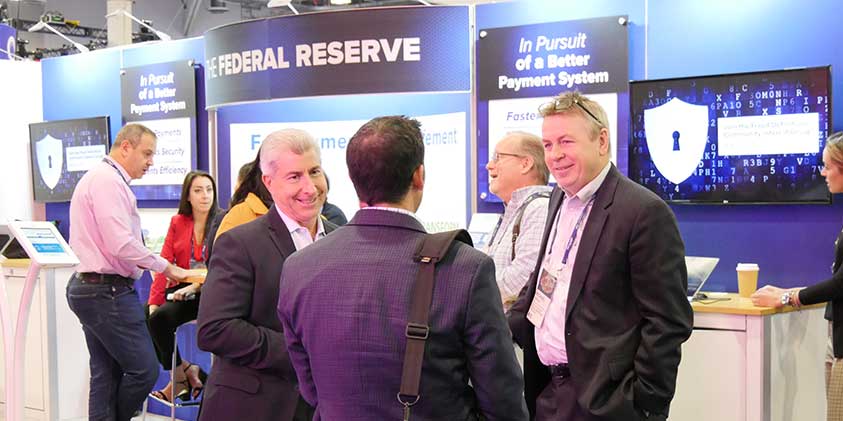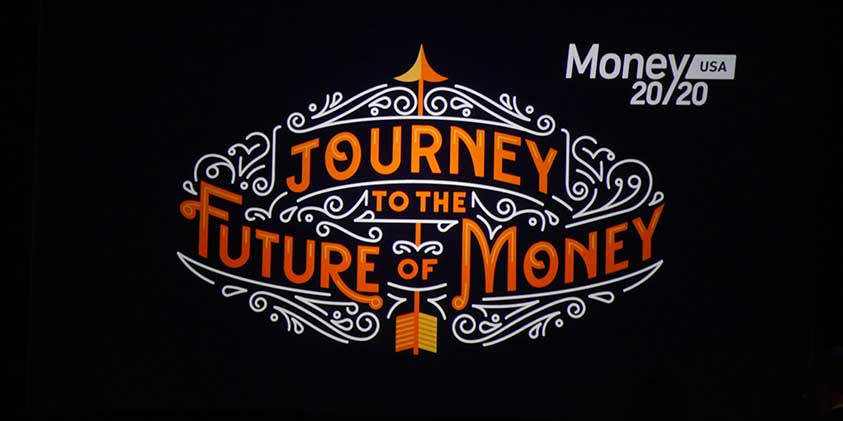By Tim Boike, Vice President, Industry Relations
Four short days. More than 11,000 attendees, 3,500 organizations and 500+ speakers from the payments, fintech and financial services sectors. Plus, a Federal Reserve exhibit booth in the middle of it all. Yes – it’s the Money20/20 USA conference (Off-site) – a major venue for the Federal Reserve to engage, gather insights and discuss developments with large numbers of payments industry stakeholders annually. This year, we hosted numerous meetings during the conference, including FPI Community Roundtables on the FedNowSM Service, payments security and cross-border payments.

Speaking sessions and exhibitors highlighted dozens of technology developments that embodied this year’s conference theme, Journey to the Future of Money. “Build it, and they will come” was the conference-wide vibe, because end users find value in products and services they didn’t originally think they needed.
Top trends in payments innovation
From conference sessions, the exhibit hall and our small-group roundtables with payments stakeholders, four trends are worthy of special mention:
- Technology is moving fast. Transformational technological innovation and approaches for moving money domestically and internationally include developments in real-time payments, person-to-person (P2P) payments and mobile wallets, which are apps that store bank or card information to facilitate purchases.
- Consumer behaviors are changing. Numerous sessions emphasized changing consumer expectations, needs and behaviors. For example, consumers increasingly are wedded to their smartphones and make purchase decisions online. Day three featured a lively conversation about the reasons some consumers go completely cashless, while the underbanked and unbanked rely on currency – illustrating the importance of ensuring that payments innovation by financial institutions and value-added service providers serves all types of end users.
- Businesses are reacting to these and other trends. For instance, consumers’ preference for online shopping creates incentives for merchants to ease consumers’ ability to both conduct product/service research and make purchases by integrating payments capabilities with marketing information and social media content. “Banking as a service” sessions discussed the benefits of providing financial services entirely via the internet, with examples ranging from the Walmart prepaid MoneyCard issued by Green Dot (Off-site) to the SaverLife free online savings program (Off-site) offered to customers of Intuit and other companies. Experts also talked about payments as a driver to “democratize” small business – essentially, leveraging payments technology to reduce friction and enable smaller businesses to compete more effectively.
- Faster is not always better. In many use cases, a business may be willing to pay a fee to receive funds faster and ensure certainty of delivery and real-time status verification on both ends of the transaction. If speed, certainty and status reports aren’t immediately necessary in a given use case, there is little incentive for change – encouraging innovators to focus instead on enhancing the user interface.

Two additional considerations
Payments security was top of mind among fraud experts, law enforcement, exhibitors and attendees alike. Data breaches and other financial crimes have created an atmosphere of distrust among end users. One session went so far as to characterize the current state as a “looming crisis.” Speakers emphasized how organizations should build in security resilience so they can recover more quickly when an issue arises. If and when payment security is compromised, experts recommended focusing on three Cs: containment of the issue, communication about the problem to affected stakeholders, and coordination with law enforcement and peer companies that also may be at risk.

Money20/20 is attended by hundreds of fintech companies who talk with payments stakeholders about their innovative ideas for the future of money. Furthermore, collaboration between financial institutions and fintechs is the best strategy to foster digital transformation, according to 81 percent of bank executives surveyed by Finextra (Off-site). Financial institutions find value in fintechs that help them accelerate development, replace legacy systems and improve the end user experience. Money20/20 provided numerous examples of payments innovation, benefits and potential concerns. For example, a session on open banking (Off-site) application programming interfaces (APIs) included a discussion about privacy, data portability and competition.
Often, it’s conversations – rather than formal presentations – that provide the most valuable takeaways from any conference. We enjoyed our conversations at Money20/20 and look forward to ongoing dialogue as we continue to collaborate with payments stakeholders to improve the U.S. payment system.
